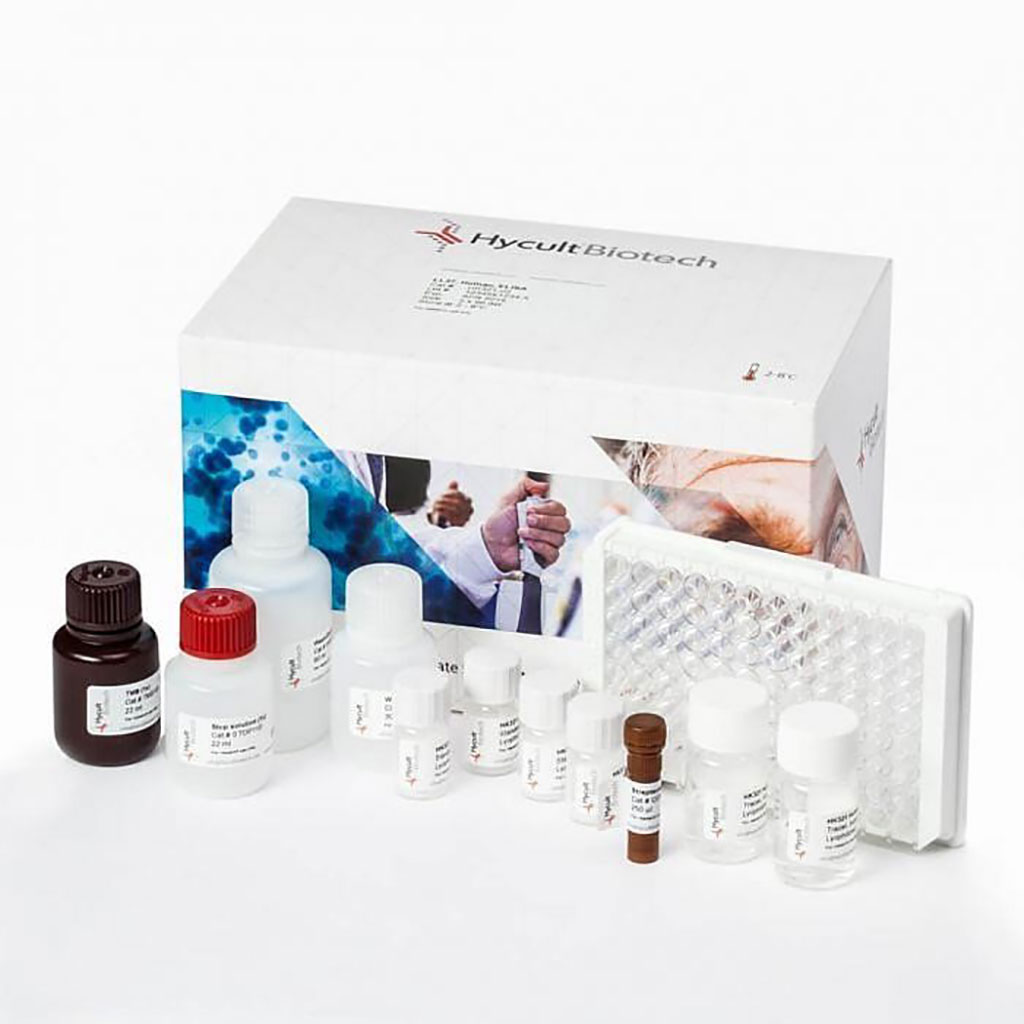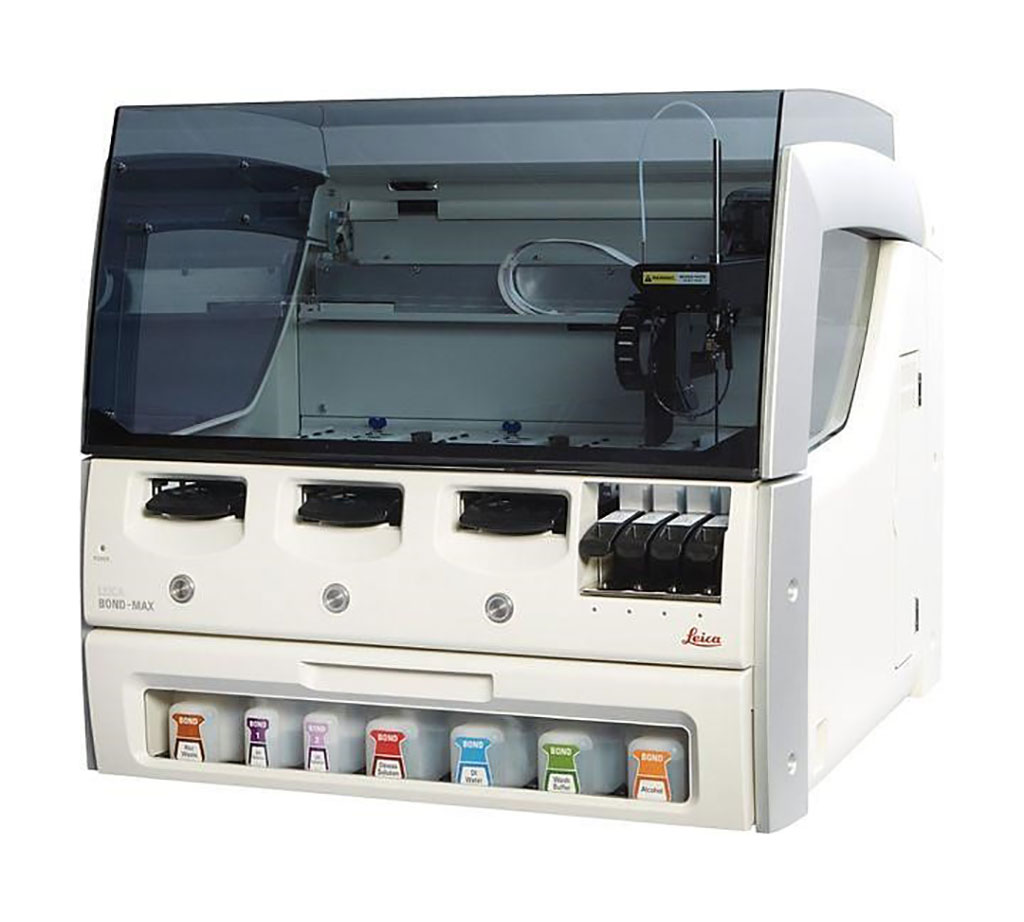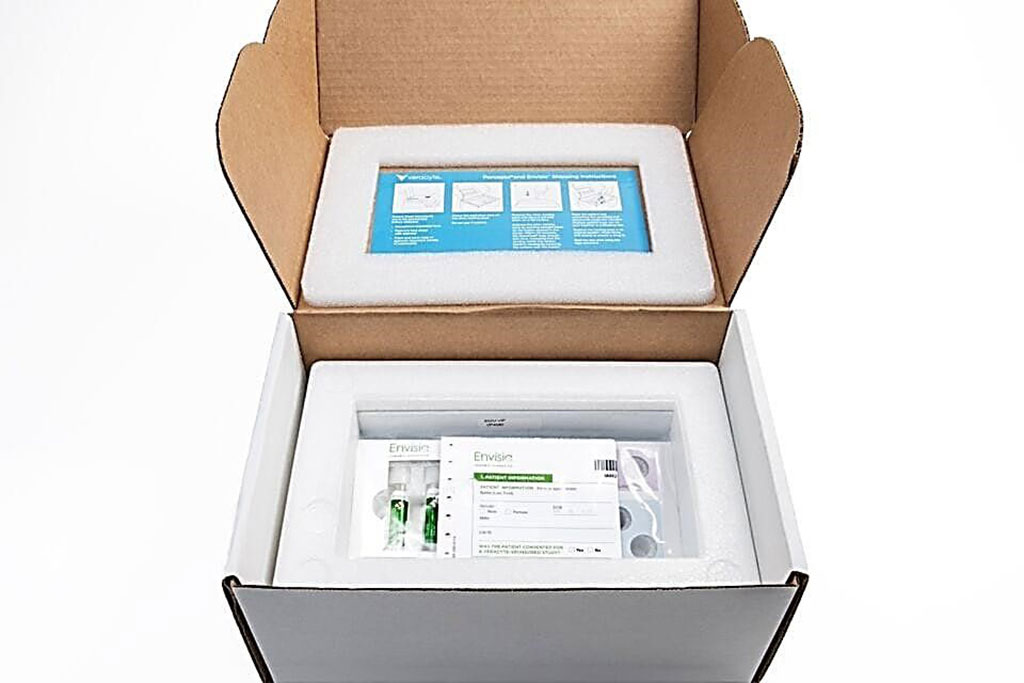Pathology
Simple Urine Test Detects Urothelial Cancers in Lynch Syndrome Patients
Lynch Syndrome (LS) is an inherited genetic disorder that carries a high risk of cancer. LS is caused by mutations affecting MLH1, MSH2, MSH6 or PMS2 genes. More than one in 300 people have LS but most do not know it and that is equivalent to more than 2,300 new cases every year in the UK. More...24 Nov 2021

POC System that Requires Single DNA Molecule for Rapid Detection of Multidrug-Resistant Pathogens Unveiled at MEDICA 2021
A new compact device for detecting multidrug-resistant pathogens that performs all stages of the reaction automatically and provides a result within one hour using one single DNA molecule was unveiled at MEDICA 2021. More...18 Nov 2021

Men with Certain Pathogenic Variants Had a Higher Incidence of Prostate Cancer
Prostate cancer is one of the major causes of morbidity and mortality in men worldwide. The importance of germline genetic variation for identifying men at increased risk of prostate cancer to enable targeted screening and early detection has become increasingly recognized. More...17 Nov 2021

Endotoxemia Genetic Profile Reveals an Association with Thromboembolism and Stroke
Microorganisms are part of the human body, and bacteria or their components often end up in the circulation. One such bacterial component is lipopolysaccharide (LPS), which is a toxin. High concentrations of LPS in the blood cause sepsis. Low LPS levels, known as endotoxemia, cause low-grade inflammation. More...09 Nov 2021


Novel Serum Biomarker Investigated for Early Gastric Cancer Diagnosis
Gastric cancer (GC) is one of the most common causes of cancer-related death worldwide. More importantly, most reported GC cases are in developing countries. The high mortality of GC is often due to its nonspecific symptoms and delayed diagnosis. More...03 Nov 2021

Gene Expression Test Improves Idiopathic Pulmonary Fibrosis Diagnosis
Idiopathic pulmonary fibrosis (IPF) is a serious chronic disease that affects the tissue surrounding the air sacs, or alveoli, in the lungs. This condition occurs when that lung tissue becomes thick and stiff for undetermined reasons. More...01 Nov 2021
In Other News
Inflammation Associated with Heart Failure in Rheumatoid Arthritis
Biomarkers Predict Long-Term Kidney Function After Acute Kidney Injury
Sysmex Inostics Launches New Ultra-Sensitive Leukemia Blood Test for Early Detection of Cancer Cells Following Initial Therapy
Calculation of Melanoma Mitotic Rate Standardized on Whole Slide Images
Philips Introduces Next-Generation Digital Pathology Solution with Integrated AI Tools and Algorithms
First-of-Its-Kind Testing Device Allows For Rapid Detection of Bacteria That Identify Risk for Preterm Birth
Bronchoalveolar Lavage Cell Pattern Determined for Diffuse Alveolar Hemorrhage
Meridian Launches New Air-Dryable qPCR Mix Enabling Direct Detection of RNA from Whole Blood Samples
ALPK3 Truncating Variants Cause Autosomal Dominant Hypertrophic Cardiomyopathy
Liquid Biopsy Test Tracks Treatment-Based ctDNA Changes
CD8 T-Cell–Predominant Lymphocytic Esophagitis Associated with GERD
Next Generation Rapid Antibiotic Susceptibility Testing (AST) Platform Granted FDA Breakthrough Device Designation
Gut Bacteria Are Possible Indicators of Colon Cancer Risk
Heparin-Binding Protein Levels Dramatically Increase in Acute Pancreatitis
Urinary VEGFA and Renal Pathology Evaluated for IgA Nephropathy Patients
Certest Offers Real-Time PCR Assays for Fast Detection of MDR Bacterial Infections
Encephalitis After Immunotherapy Detected Early by Blood Test
Blood Testing Distinguishes Benign Tumors from Precancerous Condition
CCN1 Analyzed as a Biomarker for Breast Cancer Detection
Liquid Biopsy Assay Evaluated for Early Detection of Gastric Cancer
PD-L1 Expression in Circulating Tumor Cells Investigated for NSCLC
World's First AI-Powered Solution for Gastrointestinal Cancer Diagnostics to Help Pathologists Reduce Turnaround Time
NanoVelcro Cell Technology Applied in Diagnosis of Pregnancy Complications
The Pathology channel details advances in the field of Surgical Pathology and all its subspecialties, including Cytopathology and its subspecialties.











